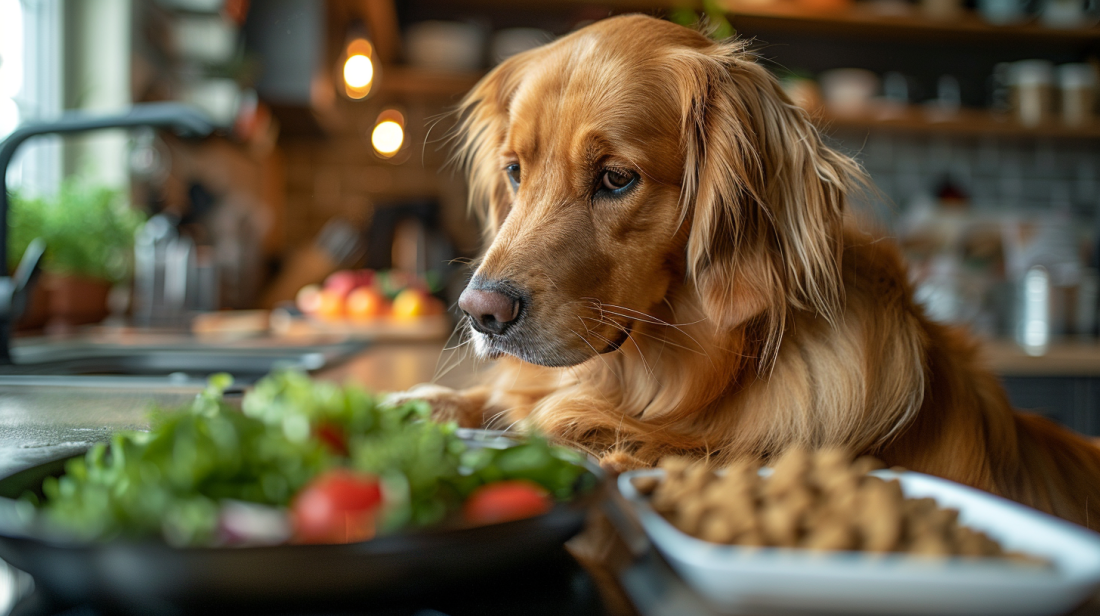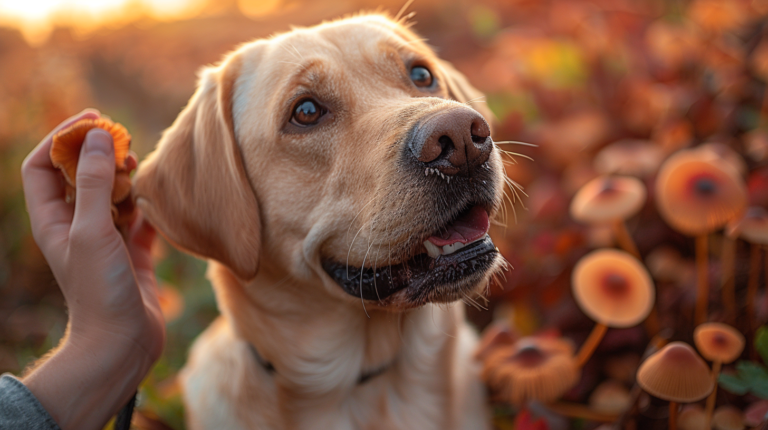Can dogs eat ham safely? Discover 8 dangerous health risks of feeding ham to dogs, plus safe alternatives and expert tips for pet owners.
Table of Contents
When you’re enjoying a delicious ham dinner with your family, those pleading puppy eyes might make you wonder: can dogs eat ham? While it’s tempting to share our favorite foods with our furry companions, ham poses significant health risks that every responsible pet owner should understand. This comprehensive guide explores the dangers of feeding ham to dogs and provides safer alternatives to keep your canine friend healthy and happy.
The short answer is that while ham isn’t immediately toxic to dogs like chocolate or grapes, it’s far from safe. Ham contains high levels of sodium, fat, and preservatives that can cause serious health complications in dogs, ranging from digestive upset to life-threatening conditions like pancreatitis and sodium poisoning.
Understanding Why Ham Is Problematic for Dogs
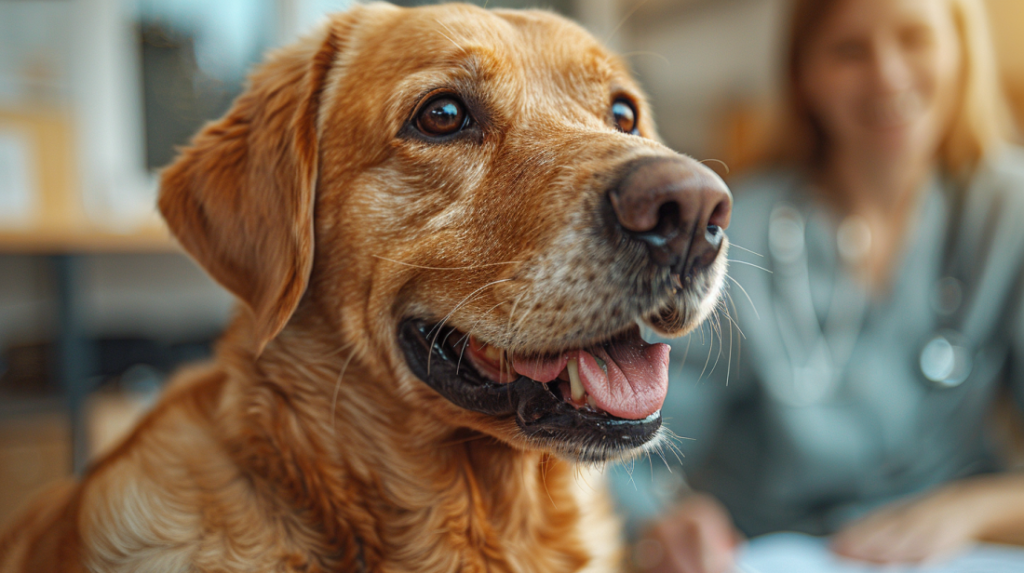
Before diving into the specific risks, it’s important to understand what makes ham particularly dangerous for our canine companions. Unlike humans, dogs have different digestive systems and metabolic processes that make them more susceptible to the negative effects of processed meats like ham.
Ham undergoes extensive processing that involves curing, smoking, and adding various preservatives and seasonings. These processes create a product that’s high in sodium, saturated fat, and often contains additives like nitrates and nitrites. While these elements might add flavor for humans, they can wreak havoc on a dog’s digestive system and overall health.
The 8 Dangerous Health Risks of Feeding Ham to Dogs
1. Sodium Poisoning (Hypernatremia)
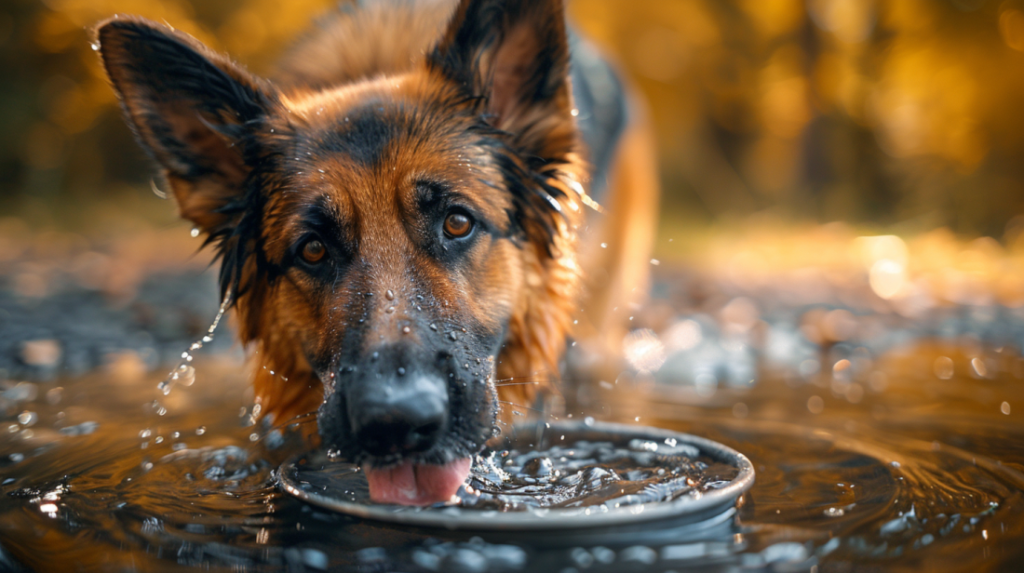
The most immediate and serious risk of feeding ham to dogs is sodium poisoning. Ham contains extremely high levels of sodium – often 15-20 times more than what dogs should consume daily. A typical 3-ounce serving of ham contains approximately 1,000-1,500 mg of sodium, while dogs should only consume about 13-25 mg per pound of body weight daily.
Symptoms of sodium poisoning include:
- Excessive thirst and urination
- Vomiting and diarrhea
- Loss of appetite
- Lethargy and weakness
- Difficulty walking or coordination problems
- Seizures (in severe cases)
- Coma or death (if untreated)
Case Study: According to veterinary emergency records, a 25-pound Beagle named Max was rushed to the emergency clinic after consuming 4 ounces of leftover ham. Within 6 hours, Max displayed severe dehydration, vomiting, and neurological symptoms. The veterinary team required 48 hours of intensive fluid therapy to stabilize his sodium levels.
2. Acute Pancreatitis

Ham’s high fat content poses another serious threat to dogs. Pancreatitis occurs when the pancreas becomes inflamed, often triggered by consuming high-fat foods. This condition can be life-threatening and requires immediate veterinary attention.
Signs of pancreatitis in dogs:
- Severe abdominal pain
- Hunched back posture
- Repeated vomiting
- Loss of appetite
- Diarrhea
- Fever
- Dehydration
- Lethargy
The American Veterinary Medical Association reports that dietary indiscretion, particularly consumption of high-fat foods like ham, accounts for approximately 30% of acute pancreatitis cases in dogs.
3. Gastrointestinal Distress and Digestive Issues
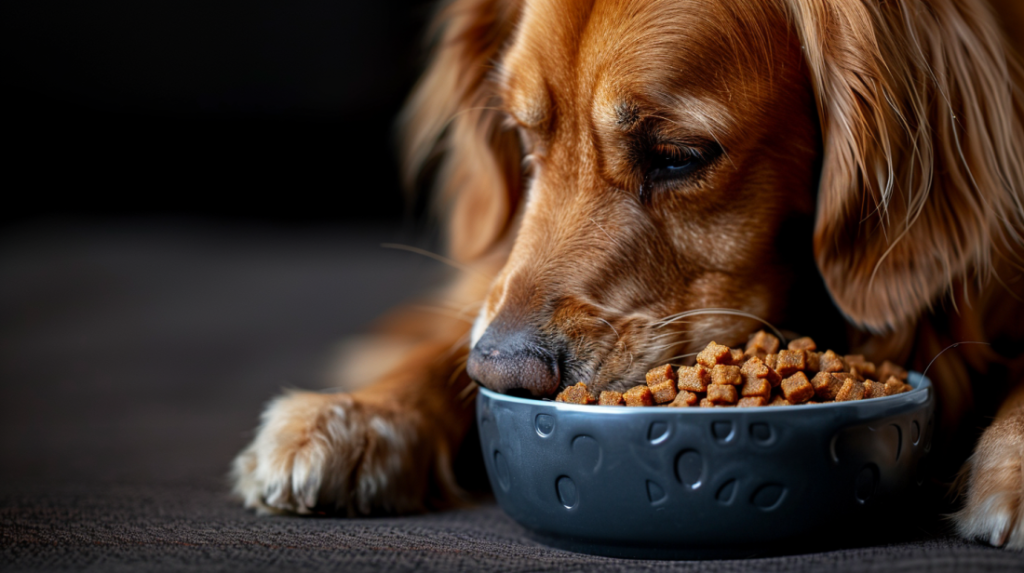
Even small amounts of ham can cause significant digestive upset in dogs. The combination of high fat, sodium, and preservatives can irritate the digestive tract, leading to:
- Nausea and vomiting
- Diarrhea or loose stools
- Abdominal cramping
- Gas and bloating
- Loss of appetite
Expert Opinion: Dr. Sarah Mitchell, DVM, explains: “Dogs lack the digestive enzymes necessary to properly process heavily processed meats like ham. The high sodium and fat content can overwhelm their system, leading to immediate gastrointestinal distress and potentially long-term health issues.”
4. Nitrate and Nitrite Toxicity

Most commercial hams contain nitrates and nitrites as preservatives. While these compounds help preserve the meat and maintain its pink color, they can be toxic to dogs in large quantities.
Health concerns related to nitrates/nitrites:
- Reduced oxygen-carrying capacity of blood
- Increased risk of certain cancers with long-term exposure
- Potential for methemoglobinemia (blue baby syndrome)
- Cardiovascular complications
5. Obesity and Weight Gain

Regular consumption of high-calorie, high-fat foods like Dogs can contribute to obesity in dogs. A single ounce of ham contains approximately 50-70 calories, which might not seem like much, but for a small dog, this represents a significant portion of their daily caloric needs.
Obesity-related health problems in dogs include:
- Joint problems and arthritis
- Diabetes
- Heart disease
- Reduced lifespan
- Decreased quality of life
6. Kidney Disease and Hypertension
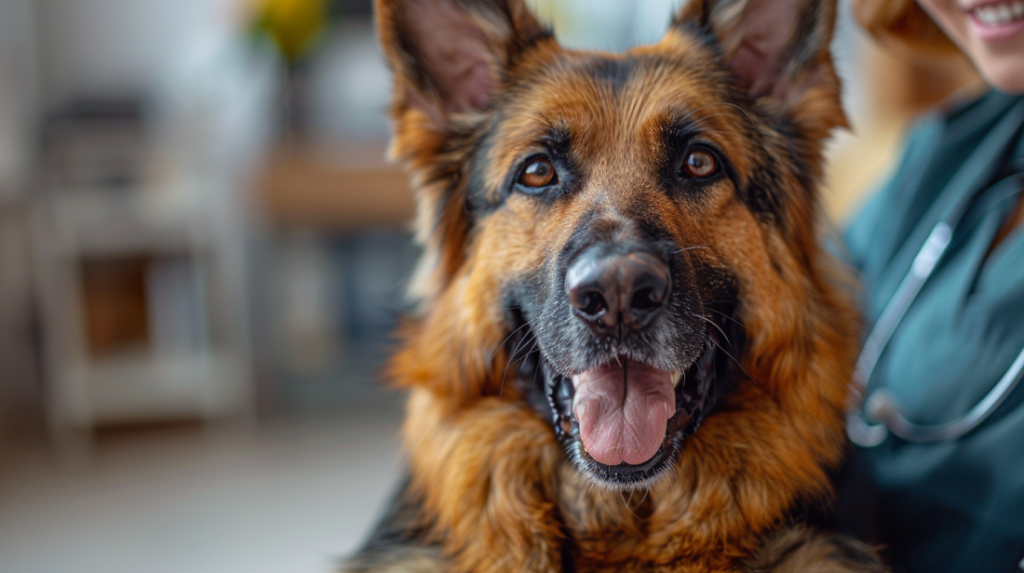
The excessive sodium in ham can put tremendous strain on a dog’s kidneys and cardiovascular system. Over time, this can lead to:
- Chronic kidney disease
- High blood pressure (hypertension)
- Heart problems
- Fluid retention
- Electrolyte imbalances
Dogs with pre-existing kidney conditions are at particularly high risk, as their kidneys are already compromised and cannot effectively filter excess sodium from their system.
7. Allergic Reactions and Food Sensitivities
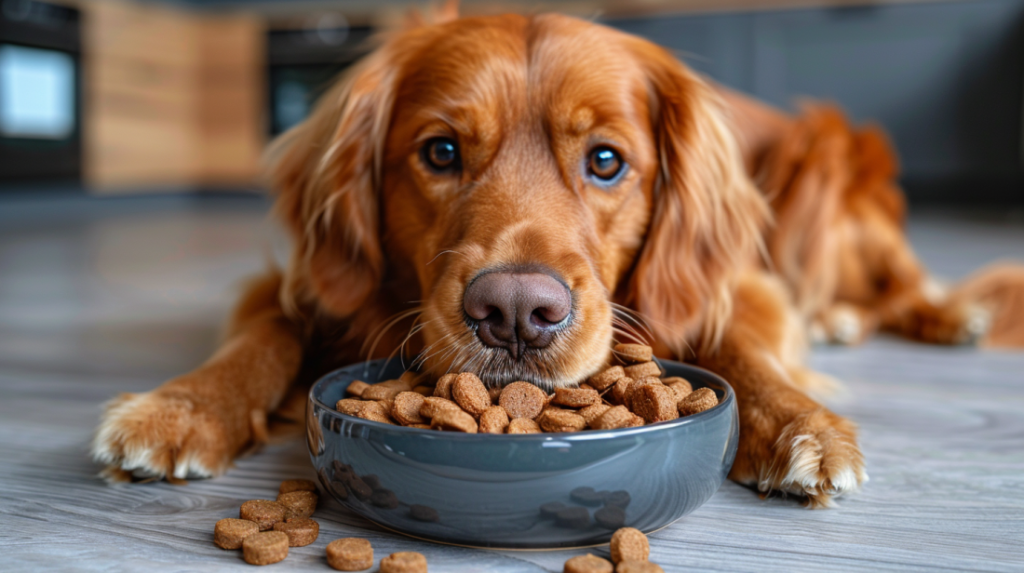
Some dogs may develop allergic reactions or food sensitivities to ham or its additives. These reactions can manifest as:
- Skin irritation and itching
- Hives or rashes
- Ear infections
- Chronic digestive issues
- Respiratory problems (in severe cases)
8. Bone and Choking Hazards

While not directly related to the meat itself, ham bones present additional dangers:
- Cooked bones become brittle and can splinter, causing choking, dental damage, or internal injuries
- Small bone fragments can become lodged in the throat or digestive tract
- Large bones can cause intestinal blockages requiring surgical removal
What to Do If Your Dog Eats Ham
Immediate Steps:
- Assess the amount consumed – Note how much ham your dog ate and when
- Remove any remaining ham – Prevent further consumption
- Provide fresh water – Help dilute sodium levels
- Monitor for symptoms – Watch for signs of distress
- Contact your veterinarian – Especially if your dog consumed a large amount
When to seek emergency care:
- Vomiting that won’t stop
- Signs of severe dehydration
- Neurological symptoms (confusion, seizures)
- Difficulty breathing
- Severe abdominal pain
Safe Alternatives to Ham for Dogs
Instead of ham, consider these dog-friendly protein options:
Lean Meats (cooked, unseasoned):
- Chicken breast
- Turkey breast
- Lean beef
- Fish (salmon, sardines)
Commercial Dog Treats:
- High-quality protein-based treats
- Freeze-dried meat treats
- Dental chews with protein
Homemade Options:
- Dehydrated sweet potato
- Carrot sticks
- Apple slices (without seeds)
- Plain cooked rice
Creating a Dog-Safe Holiday Menu
Table: Safe vs. Unsafe Holiday Foods for Dogs
| Safe Foods | Safe Foods |
| Plain turkey (no seasoning) | Ham |
| Sweet potatoes | Stuffing with onions |
| Green beans | Gravy |
| Carrots | Chocolate desserts |
| Plain pumpkin | Alcoholic beverages |
Prevention Tips for Pet Owners
Kitchen Safety Measures:
- Keep ham and other processed meats out of reach
- Educate family members about feeding restrictions
- Use baby gates to keep dogs away from dining areas during meals
- Dispose of ham bones and scraps in secure trash containers
Training Strategies:
- Teach the “leave it” command
- Practice impulse control exercises
- Reward good behavior with appropriate treats
- Establish consistent feeding rules for all family members
For more expert pet care tips and product recommendations, visit BlithePet.com — your trusted source for pet wellness.
Frequently Asked Questions
Can Dogs Eat Ham a small piece of ham?
Even small amounts of ham can cause digestive upset in sensitive dogs due to its high sodium and fat content. While a tiny piece might not cause immediate harm to a large, healthy dog, it’s best to avoid ham entirely and choose safer alternatives.
What should I do if my dog accidentally ate ham?
Monitor your dog closely for symptoms like vomiting, diarrhea, excessive thirst, or lethargy. Provide fresh water and contact your veterinarian, especially if your dog consumed a large amount or shows any concerning symptoms.
Are there any types of ham that are safe for dogs?
No type of ham is considered safe for dogs. All varieties contain high levels of sodium and fat that can cause health problems. Even “low-sodium” or “natural” hams still contain more sodium than dogs should consume.
Can dogs eat ham bones?
No, dogs should never eat ham bones. Cooked bones become brittle and can splinter, causing choking hazards, dental damage, or serious internal injuries. Raw bones also pose risks of bacterial contamination.
How much ham is toxic to dogs?
There’s no “safe” amount of ham for dogs. Even small quantities can cause digestive upset, while larger amounts can lead to sodium poisoning or pancreatitis. The toxicity depends on the dog’s size, health status, and individual sensitivity.
What are the signs of sodium poisoning in dogs?
Signs include excessive thirst and urination, vomiting, diarrhea, loss of appetite, weakness, difficulty walking, and in severe cases, seizures or coma. If you notice these symptoms after your dog has consumed ham, seek immediate veterinary care.
Conclusion
Understanding whether can dogs eat ham is crucial for every pet owner’s knowledge base. The answer is clear: ham poses significant health risks to dogs, including sodium poisoning, pancreatitis, digestive issues, and long-term health complications. The high sodium, fat content, and preservatives in ham make it unsuitable for canine consumption, regardless of the amount.
The eight dangerous health risks we’ve explored – from immediate threats like sodium poisoning to long-term concerns like kidney disease – demonstrate why ham should be completely avoided in your dog’s diet. Instead, focus on providing safe, nutritious alternatives that will keep your furry friend healthy and satisfied.
Remember, the best way to show love to your dog is by making informed decisions about their nutrition. When in doubt, consult with your veterinarian about appropriate treats and foods for your specific pet’s needs.
Have a similar experience with your pet? Share it in the comments below!

